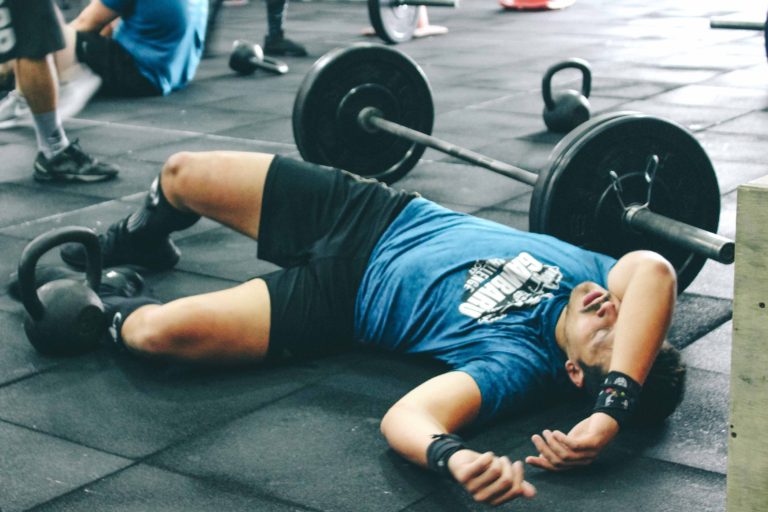The Type of Stress Matters

There are two primary questions that must be addressed in order to help determine whether you experience a Eustress or a Distress.
Those two questions are:
- What was the nature of the initial stressor that caused the alarm?
- Was there sufficient enough opportunity for recovery prior to a follow-up stressor?
Please recall that there are physical and psychological aspects to all stress, regardless of whether the initial stressor was physical or psychological in nature. Therefore, there must be physical and psychological considerations for each of the two questions listed above.
Within this article, we will delve deeper into question #1, and discuss how the nature or type of stressor impacts the stress response.
The nature of the stressor
The nature of the stressor is the first factor your body must face when determining whether you experience positive and beneficial stress known as Eustress, or negative and harmful stress known as Distress.
A simple way of considering the nature of a stressor is by classifying that stressor as either a challenge or a threat. This classification is based on the following questions:
Did the demands of the stressor exceed the resources we currently possess?
Or even simpler: Was the stressor more than the body could handle at that time?
The stressor is deemed a challenge when the answer to the above questions is no. On the other hand, the stressor would be a threat if the answer is yes.
Physical nature
The physical nature of a stressor is the aspect that is most commonly considered. If you are resistance training and you are able to lift the weight with appropriate difficulty, then your resources (muscular strength) exceeded the demands of the stressor (the weight of the resistance). Therefore, the exercise was challenging and you resultantly experienced a Eustress (as long as you also provided for sufficient recovery post workout).
On the other hand, if you were resistance training but the demands of the stressor (the weight of the resistance) exceeded the resources you possessed at that moment (muscular strength), than you may end up injuring the muscles involved and experiencing a distress. In this case, the activity would be considered a threat rather than an appropriate challenge.
Psychological nature
In addition to the physical aspect, there is also a very significant psychological aspect involved when considering the nature of the stressor.
We have previously defined a stressor as any obstacle that challenges or threatens your body’s ability to maintain balance. Recently, published scientific research has been demonstrating that the way the brain perceives stressors also highly influences how the body will react to those stressors.
More specifically, a stressor that is perceived as a “challenge” is more likely to result in a Eustress, while a stressor that is perceived as a “threat” is more likely to result in a Distress.
This phenomenon is likely the result of the interaction between your Central Nervous System and the Autonomic aspect of your Peripheral Nervous System.
Please recall that your stress response is powered by your Autonomic Nervous System. The Sympathetic branch of your Autonomic Nervous System works by increasing heart rate as well as improving blood flow and the transport of other key nutrients and substances to the areas of your body that your brain has determined need it the most for survival and adaptation at that time. Simultaneously the Sympathetic Nervous System reduces blood flow and other resources to the other areas of your body that your brain has deemed less important for immediate survival.
The key here is that the response is dictated by what the BRAIN has determined to be most beneficial. This of course should come as no surprise, as we know that the Central Nervous System, of which the brain is a key aspect of, dictates all other actions and functions within our body.
Research has demonstrated that when individuals perceive a situation as “challenging,” their blood vessel diameter along with cardiac output increases. This allows for improved blood/nutrient transport and may therefore be considered a Eustress response. In contrast, times of “threat” resulted in the constriction of blood vessels and decrease of cardiac output and blood/nutrient transport leading to Distress.
…so what?
Physical performance suffers massively without blood and nutrient delivery. Blood carries essential energy sources, including oxygen, which are required to perform physical activity. In addition, blood carries essential nutrients for recovery, which are crucial if you’ve sustained an injury. Without sufficient nutrition and energy sources, you will likely experience impaired healing as well as significant drops in strength, speed, and endurance.
Although no one can say for sure, it is predicted that this pattern occurs in order to promote survival. By definition, the brain does not believe a challenging situation will result in harm, and so it will signal all necessary actions to assist in overcoming the challenge and meeting the goal.
However, during a threatening situation which the brain believes may result in harm, blood flow and nutrition may actually decrease in order to prevent excessive blood and energy loss in case injury and bleeding occurs.
TAKE ACTION!
- Reference and review the updated list you completed in the “Learn How to Take Advantage of Stress” article.
- Take the time to go through your list of Eustress and Distress, and reflect on how the nature of the initial stressor affected your outcome.
- Be sure you read the following article to learn exactly how recovery influences your stress response
- Once you successfully read through and understand the recommended content on the nature of the initial stressor and recovery, continue on to the final article in Step 2 of the Convergent Path to Performance. In the final Step 2 article, you will learn how to begin planning your personalized performance enhancement program by effectively taking advantage of the mind-body stress phenomenon in a way that maximizes Eustress while minimizing Distress.
Summary
The nature and type of stressor directly impacts whether you will experience a Eustress or Distress. Stressors that appropriately challenge your physical body and do not result in fear have a higher likelihood of eliciting a Eustress as long as appropriate recovery was permitted. On the other hand, if the physical body was not able to handle the stressor, or if you fear the stressor may potentially cause damage or injury, than you are more likely to experience a distress.

Dr. Eugene Ketselman PT, DPT, Cert. MDT, CSCS
Dr. Eugene Ketselman is a licensed Physical Therapist, Certified Strength and Conditioning Specialist, Performance Coach, and owner of Convergent Movement and Performance; Home of where Physical Therapy, fitness, and performance training converge! Dr. Ketselman's mission is to help motivated athletes and active adults excel in their passions by maximizing physical performance and reducing setbacks from pain and injury.
Here at Convergent Movement and Performance, we practice what we preach. You know we are a good match for one another as soon as you find yourself relating to the content we provide. Be sure to click below to learn more.
Do you have specific questions that aren’t answered on this website?
Click below
Does pain, weakness, or exhaustion prevent you from reaching your FULL potential while performing the activities you love?
Click below
Do you love what you’re seeing, but still aren’t sure if you can make the commitment?
Click below
Contact Us
Convergent Movement and Performance serves out of Northern – Central New Jersey, conveniently located to those that live, work, and travel in the nearby towns of Warren, Bridgewater, Martinsville, Watchung Hills, Bedminster, Basking Ridge, Bernardsville, Chatham, Westfield, and Piscataway within Somerset, Morris, Union, and Middlesex counties, NJ.
